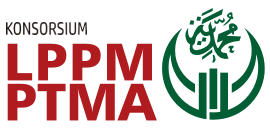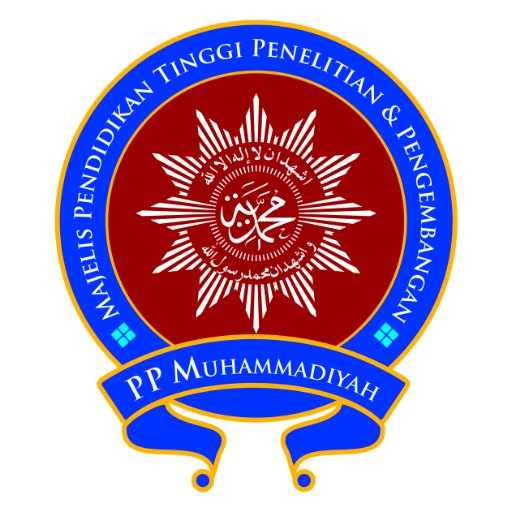A Bibliometric Analysis of COVID-19 Researches: Omicron Variant
DOI:
https://doi.org/10.53017/ujhs.132Keywords:
Omicron Variant, Variant of Concent, COVID-19 mutationAbstract
The aims of this research were to analyse the omicron variant COVID-19 literature published during the COVID- 19 pandemic and to guide future research relating to this variant. From 2021, November 26th to 2022, January 31th , the Pubmed (pubmed.gov) all databases collection was searched for publications related to omicron variant of COVID-19. The keywords used during this search were (omicron sars cov and (omicron covid-19). Exported Microsoft Excel files, Bibliometrics indicator analysis was performed using Bibliometric/Biblioshiny, a web interface application accessed using R-Studio. In total, 262 publications related to omicron varian of COVID- 19 were identified. In these publications, the most active author, journal, country and organisation were Wang L, Nature, China and University Of Oxford, respectively. The most commonly used keywords were humans, sars-cov-2, covid-19, mutation, covid-19 vaccines, spike glycoprotein coronavirus, adult, animals, covid-19/epidemiology/virology and antibodies viral/immunology. This Bibliometric analysis is helpful for mapping studies related to the omicron variant of COVID- 19. This article provides an overview of further researches related to omicron variant of COVID- 19 For example, by searching for keywords, this variant is associated with gender, spike glycoprotein coronavirus and mutation.
Downloads
References
K. V. Holmes, “SARS coronavirus: A new challenge for prevention and therapy,” Journal of Clinical Investigation, vol. 111, no. 11, pp. 1605–1609, 2003, doi: 10.1172/JCI18819.
M. Letko, A. Marzi, and V. Munster, “Functional assessment of cell entry and receptor usage for SARS-CoV-2 and other lineage B betacoronaviruses,” Nature Microbiology, vol. 5, no. 4, pp. 562–569, 2020, doi: 10.1038/s41564-020-0688-y.
J. F. W. Chan et al., “A familial cluster of pneumonia associated with the 2019 novel coronavirus indicating person-to-person transmission: a study of a family cluster,” The Lancet, vol. 395, no. 10223, pp. 514–523, 2020, doi: 10.1016/S0140-6736(20)30154-9.
D. Wrapp et al., “Cryo-EM structure of the 2019-nCoV spike in the prefusion conformation,” Science, vol. 367, no. 6483, pp. 1260–1263, 2020, doi: 10.1126/science.aax0902.
Q. Li et al., “Early Transmission Dynamics in Wuhan, China, of Novel Coronavirus–Infected Pneumonia,” New England Journal of Medicine, vol. 382, no. 13, pp. 1199–1207, 2020, doi: 10.1056/nejmoa2001316.
X. Li, “Structure, Function, and Evolution of Coronavirus Spike Proteins,” Physiology & behavior, vol. 176, no. 3, pp. 139–148, 2016, doi: 10.1146/annurev-virology-110615-042301.Structure.
F. Li, “Receptor recognition and cross-species infections of SARS coronavirus,” no. January, 2020.
R. L. Graham and R. S. Baric, “Recombination, Reservoirs, and the Modular Spike: Mechanisms of Coronavirus Cross-Species Transmission,” Journal of Virology, vol. 84, no. 7, pp. 3134–3146, 2010, doi: 10.1128/jvi.01394-09.
S. M. Hirabara et al., “SARS-COV-2 Variants: Differences and Potential of Immune Evasion,” Frontiers in Cellular and Infection Microbiology, vol. 11, no. January, pp. 1–17, 2022, doi: 10.3389/fcimb.2021.781429.
M. S. Ramundo, J. G. De Jesus, P. S. Andrade, and T. M. Coletti, “Genomics and epidemiology of the P.1 SARS-CoV-2 lineage in Manaus, Brazil,” vol. 821, no. May, pp. 815–821, 2021.
R. Andrew et al., “Preliminary genomic characterisation of an emergent SARS-CoV-2 lineage in the UK defined by a novel set of spike mutations,” Virological.Org, 2020.
H. Tegally et al., “Detection of a SARS-CoV-2 variant of concern in South Africa,” Nature, vol. 592, p. 438, 2021, doi: 10.1038/s41586-021-03402-9.
L. Lin, Y. Liu, X. Tang, and D. He, “The Disease Severity and Clinical Outcomes of the SARS-CoV-2 Variants of Concern,” Frontiers in Public Health, vol. 9, no. December 2020, pp. 1–12, 2021, doi: 10.3389/fpubh.2021.775224.
CDC, “CDC Statement on B.1.1.529 (Omicron variant),” Centers for Disease Control and Prevention, 2021. .
D. Sehnal et al., “Mol?Viewer: Modern web app for 3D visualization and analysis of large biomolecular structures,” Nucleic Acids Research, vol. 49, no. W1, pp. W431–W437, 2021, doi: 10.1093/nar/gkab314.
A. Aristovnik, D. Ravšelj, and L. Umek, “A bibliometric analysis of covid-19 across science and social science research landscape,” Sustainability (Switzerland), vol. 12, no. 21, pp. 1–30, 2020, doi: 10.3390/su12219132.
M. Haghani, M. C. J. Bliemer, F. Goerlandt, and J. Li, “The scientific literature on Coronaviruses, COVID-19 and its associated safety-related research dimensions: A scientometric analysis and scoping review,” no. January, 2020.
A. M. Syed et al., “Omicron mutations enhance infectivity and reduce antibody neutralization of SARS-CoV-2 virus-like particles,” doi: 10.1101/2021.12.20.21268048.
S.-Y. Ren, W.-B. Wang, R.-D. Gao, and A.-M. Zhou, “Omicron variant (B.1.1.529) of SARS-CoV-2: Mutation, infectivity, transmission, and vaccine resistance,” World Journal of Clinical Cases, vol. 10, no. 1, pp. 1–11, 2022, doi: 10.12998/wjcc.v10.i1.1.
V. Papanikolaou et al., “From delta to Omicron: S1-RBD/S2 mutation/deletion equilibrium in SARS-CoV-2 defined variants,” Gene, vol. 814, no. December 2021, p. 146134, 2022, doi: 10.1016/j.gene.2021.146134.
C. S. Lupala, Y. Ye, H. Chen, X. D. Su, and H. Liu, “Mutations on RBD of SARS-CoV-2 Omicron variant result in stronger binding to human ACE2 receptor,” Biochemical and Biophysical Research Communications, vol. 590, pp. 34–41, 2022, doi: 10.1016/j.bbrc.2021.12.079.
C. Nie, A. K. Sahoo, R. R. Netz, A. Herrmann, M. Ballauff, and R. Haag, “Charge Matters: Mutations in Omicron Variant Favor Binding to Cells,” ChemBioChem, vol. 202100681, 2022, doi: 10.1002/cbic.202100681.
B. Kazybay, A. Ahmad, C. Mu, D. Mengdesh, and Y. Xie, “Omicron N501Y mutation among SARS-CoV-2 lineages: Insilico analysis of potent binding to tyrosine kinase and hypothetical repurposed medicine,” Travel Medicine and Infectious Disease, vol. 45, no. December 2021, p. 102242, 2022, doi: 10.1016/j.tmaid.2021.102242.
D. R. Wesemann, “Omicron’s message on vaccines: Boosting begets breadth,” Cell, vol. 185, no. 3, pp. 411–413, 2022, doi: 10.1016/j.cell.2022.01.006.
Y. Gao et al., “Machine learning based early warning system enables accurate mortality risk prediction for COVID-19,” Nature Communications, vol. 11, no. 1, pp. 1–10, 2020, doi: 10.1038/s41467-020-18684-2.
J. Liu et al., “Vaccines Elicit Highly Conserved Cellular Immunity to SARS-CoV-2 Omicron,” Nature, 2022, doi: 10.1038/s41586-022-04465-y.
L.-L. Chen et al., “Omicron variant susceptibility to neutralizing antibodies induced in children by natural SARS-CoV-2 infection or COVID-19 vaccine,” 2022, doi: 10.1080/22221751.2022.2035195.
E. K. Accorsi et al., “Association Between 3 Doses of mRNACOVID-19 Vaccine and Symptomatic Infection Caused by the SARS-CoV-2 Omicron and Delta Variant,” JAMA, vol. 327, no. 7, pp. 639–651, 2022, doi: 10.1001/jama.2022.0470.
M. G. Thompson et al., “Morbidity and Mortality Weekly Report Effectiveness of a Third Dose of mRNA Vaccines Against COVID-19-Associated Emergency Department and Urgent Care Encounters and Hospitalizations Among Adults During Periods of Delta and Omicron Variant Predominance-VIS,” 2021.
S. Faustini et al., “Cross reactivity of spike glycoprotein induced antibody against Delta and Omicron variants before and after third SARS-CoV-2 vaccine dose in healthy and immunocompromised individuals,” Journal of Infection, vol. 44, no. 0, 2022, doi: 10.1016/j.jinf.2022.01.002.
A. K. Tsang et al., “Unusual high number of spike protein mutations for the SARS-CoV-2 strains detected in Hong Kong,” Journal of Clinical Virology, vol. 148, no. December 2021, p. 105081, 2022, doi: 10.1016/j.jcv.2022.105081.
L. Wang, N. A. Berger, D. C. Kaelber, P. B. Davis, N. D. Volkow, and R. Xu, “Comparison of outcomes from COVID infection in pediatric and adult patients before and after the emergence of Omicron.,” medRxiv?: the preprint server for health sciences, Jan. 2022, doi: 10.1101/2021.12.30.21268495.
M. Li, F. Lou, and H. Fan, “SARS-CoV-2 variant Omicron: currently the most complete ‘escapee’ from neutralization by antibodies and vaccines,” doi: 10.1038/s41392-022-00880-9.
N. K. Takashita, Emi, “Efficacy of Antibodies and Antiviral Drugs against Covid-19 Omicron Variant,” 2022, doi: 10.1056/NEJMc2119407.
Downloads
Published
How to Cite
Issue
Section
License
Copyright (c) 2022 Husnul Khuluq, Tri Cahyani Widiastuti, Dwiki Fitri

This work is licensed under a Creative Commons Attribution-NonCommercial 4.0 International License.





